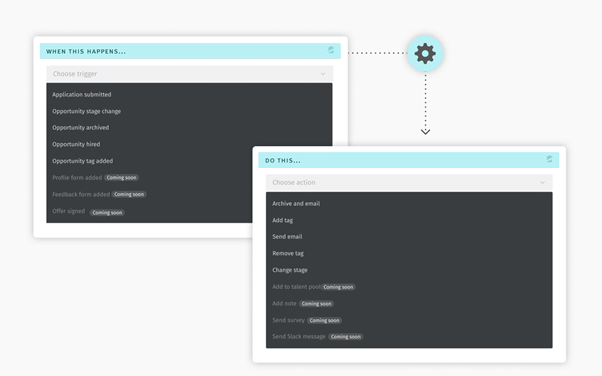While extending your hiring and talent relationship management to include a global talent pool beyond the more localized brick-and-mortar domain sounds appealing, and there certainly are advantages, new challenges also may erupt.
The reality is, with a seemingly limitless repository of potential candidates also comes an increase of unqualified applicants, further clogging up an often-overwhelmed recruitment system.
“Because people from around the world are able to apply to your openings, the second you post a job ad, the floodgate opens,” says Viktor Petersson in A Decade of Remote Work. “The reality is that 99.9% of the applicants for remote jobs are people who utilize the ‘spray and pray’ approach.”
Apply a Scientific Approach to Candidate Vetting
Various strategies are available to ferret out quality candidates who will be a fit for specifically virtual roles. Applying these methods at the forefront of the process will help expedite meaningful remote-hiring results.
Rachel Go, who wrote an article on hiring remote workers and the qualities to seek out, suggests being mindful of the remote employee’s response time to your emails, their professional tone, and their communication acumen during the interview, which translates into their communications skills on the job.
“If they take a few days to respond, chances are they won’t be quick to respond to work-related emails. If you have to follow up more than twice for important information, they may need to work on their attention to detail. Hire someone who responds quickly, and forms their thoughts well on screen,” asserts Go.
As well, advertising for candidates with traits specifically aligned with remote-worker success will help to ensure a more focused vetting process and longer-term employee retention.
We’ve paraphrased a few of those traits, recommended by Zapier, below:
- Action-Oriented: Proactively performs meaningful tasks, with or without a task-list compass.
- Priority-Focused: Focuses on right tasks, right now, prioritizing by impact.
- Proficient Writer: Writes clearly, concisely, and tactfully, integral to remote communications that rely upon text (email, team chat, 1:1 private messages).
- Trustworthy: Exudes trustworthy behaviors, particularly foundational to successful relationships where you cannot see the team member every day.
- Socially Independent Thrives in a less-social work environment and/or has established their own social network outside of the workplace.
Have a Pre-Screening Checklist
Once you’ve determined the types of qualities remote-work candidates should exude, consider strategies for pre-screening. Doing so isn’t just a survival tactic for recruiters – it’s a competitive advantage, according to Lever’s Pre-Interview Screening Question Guide, which says of 74% of companies who admit hiring the wrong person for a position, they lose an average of nearly $15,000 for each bad hire (according to a survey).
In addition to saving time and money by weeding out wrong-fit talent at the start, successful pre-screening also helps to understand a candidate’s work style and temperament, helping identify applicants who aren’t a good fit now but might be in the future. This is a valuable process to undergo, strengthening your future talent base for ongoing remote hiring needs.
Whether you choose a phone/video chat or an online survey approach to pre-screening candidates, Lever recommends these three best practices:
- Schedule 15 minutes on the candidate’s calendar, but block off 60 minutes on your own in case you want to get into the weeds with a candidate.
- Curate a list of questions you want to ask, but make sure that they’re always relevant to the role and give them a refresh every few quarters.
- Automate the pre-screening process for in-demand candidates. It’s a good idea to skip the pre-screening interview step and place these candidates directly into your interview process.
Pro tip: Lever allows automation within steps to expedite the hiring process. You can automate how certain candidates flow through interview stages and more.

Source: Lever
Developing the Best Pre-Screening Interview Questions
Once you have forged your pre-screening process, you’re ready to hammer out a list of questions that will unearth a sample of a candidate’s on-the-job performance stories.
Here are a few of the 19 questions that Lever suggests you use as a baseline:
- What about your current and past work experience make you a great fit for our role?
- What is the biggest challenge you’ve faced in your current or previous role? How did you overcome this challenge? What was the outcome?
- What are your goals for professional development? How will getting this job help you advance toward your professional development goals?
- What does your perfect manager look like? Have you ever had a manager who was close to this ideal or fit it exactly?
- What type of work environment do you prefer? Management style?
Petersson suggests a set of “rigorous screening questions” that requires the candidate to invest thought work and also “will help you weed out all the candidates who simply put ‘Call me to discuss’ in all the boxes (or worse).”
The candidate interview pre-screening process, for some industries, has pivoted in a remote landscape. Building a connection is harder and how you gauge commitment and passion for the company is even more important now in a sea of more applications.
Meaningfully Engage Your New Remote Workers
Once you’ve brought on the new team members to your virtual headquarters, the next challenge is ensuring their productivity and efficiency by providing centralized leadership support, direction, and motivation.
If remote workers feel their managers are out of touch because of a lack of face-to-face supervision, their productivity may decline. They may be silently groaning as they desire (but do not receive) guidance on a specific set of project deliverables, advice on overcoming obstacles blocking their way forward, or a map to specific resources critical to serving customers.
According to the Harvard Business Review, these remote-work challenges can be tamed fairly easily, not the least of which is to “establish structured daily check-ins,” as well as offer multiple communications options, beyond email and including ‘richer’ tech such as video conferencing
This communication and employee engagement check-in checklist created by Horst Insurance may be a helpful place to start.
Employee Engagement Communication Checklist
- Do you have a plan for regularly communicating with remote employees?
- Is your communication plan detailed in your company’s telecommuting policy?
- Do you plan on checking in with employees daily?
- Do you have plans for fostering team-wide communication?
“More than ever, leaders must be attuned to the needs of their businesses and their people, even though the stresses in their own lives may have increased during the pandemic,” say Alec Levenson and Patrick McLaughlin in New Leadership Challenges for the Virtual World of Work.
This includes simple leadership courtesies such as responding quickly. “Just because you are remote does not mean that people need you less or have fewer urgent requests,” suggests Brian De Haaf, Co-Founder and CEO, Aha!, in this Inc. article.
Final Thoughts: Hiring With Speed and Conviction
Lever’s mission is to help the world hire with conviction. Melding this vision with a focus on remote-hiring speed and quality means leveraging the right resources, right now. Check out the eBook, 11 Sourcing Hacks to Hire Faster to help you build the connection, grow your diversity and set your company up for success for many years to come.
To learn more about Lever, click here.









